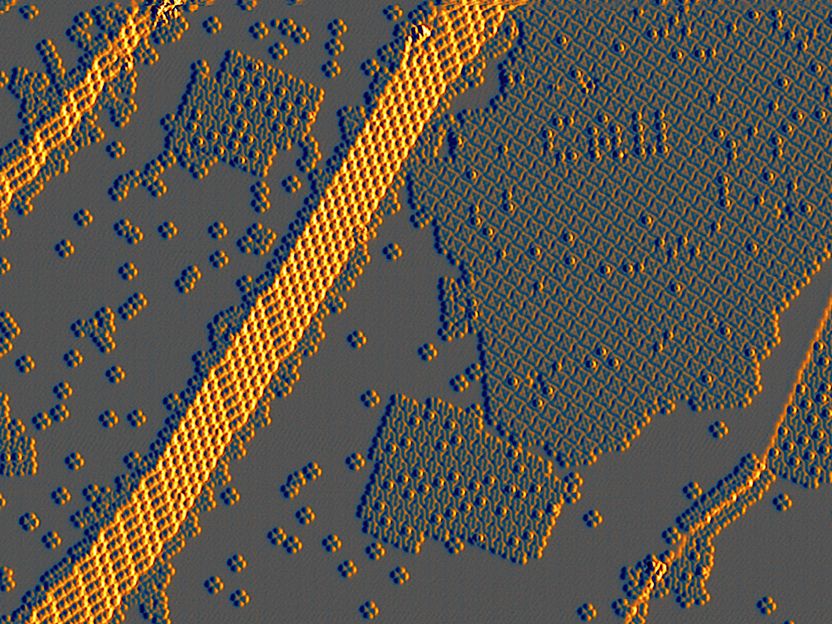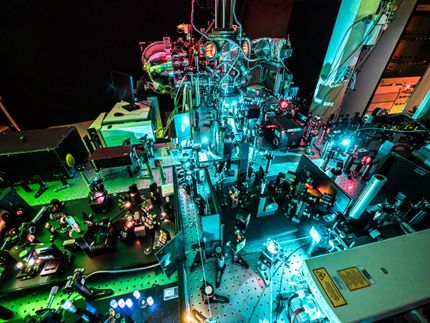Sharper than ever: Physicists make molecular vibrations more detectable
The new method will improve the understanding of interactions in molecular systems and to further develop simulation methods
In molecules, the atoms vibrate with characteristic patterns and frequencies. Vibrations are therefore an important tool for studying molecules and molecular processes such as chemical reactions. Although scanning tunnelling microscopes can be used to image individual molecules, their vibrations have so far been difficult to detect. Physicists at Kiel University (CAU) have now invented a method with which the vibration signals can be amplified by up to a factor of 50. Furthermore, they increased the frequency resolution by far. The new method will improve the understanding of interactions in molecular systems and to further develop simulation methods. The research team has now published the results in the journal Physical Review Letters.

In this microscope image the lead phthalocyanine molecules on a superconducting lead surface appear as four-leaf clovers. The vibrations of these molecules were studied with the new method.
© Jan Homberg
The discovery by Dr. Jan Homberg, Dr. Alexander Weismann and Prof. Dr. Richard Berndt from the Institute of Experimental and Applied Physics, relies on a special quantum mechanical effect, the so-called inelastic tunnelling. Electrons that pass through a molecule on their way from a metal tip to the substrate surface in the scanning tunnelling microscope can release energy to the molecule or take it up from it. This energy exchange occurs in portions determined by the properties of the respective molecule.
Normally, this energy transfer happens only rarely and is therefore difficult to measure. In order to amplify the measurement signal and simultaneously achieve a high frequency resolution, the team of the CAU used a special property of molecules on superconductors they had previously discovered: suitably arranged, the molecules show a state in the spectra that appears needle-shaped, very high and extremely sharp -- the so-called Yu-Shiba-Rusinov resonance. The experiments were supported by theoretical work of Troels Markussen from the software company Synopsis in Copenhagen.
Original publication
Other news from the department science

Get the analytics and lab tech industry in your inbox
By submitting this form you agree that LUMITOS AG will send you the newsletter(s) selected above by email. Your data will not be passed on to third parties. Your data will be stored and processed in accordance with our data protection regulations. LUMITOS may contact you by email for the purpose of advertising or market and opinion surveys. You can revoke your consent at any time without giving reasons to LUMITOS AG, Ernst-Augustin-Str. 2, 12489 Berlin, Germany or by e-mail at revoke@lumitos.com with effect for the future. In addition, each email contains a link to unsubscribe from the corresponding newsletter.
























































